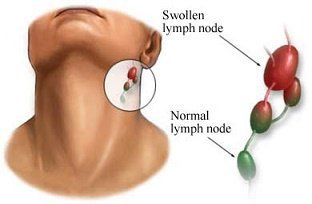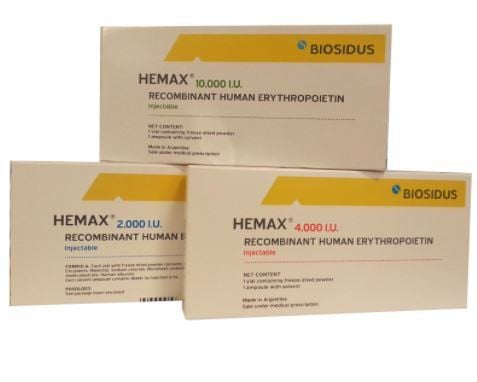This is an automatically translated article.
Interleukin-2 is one of the important cytokines involved in many different metabolic processes of the body. Supplementing with IL-2 may aid in cancer treatment. Aldesleukin is a pharmaceutical product containing recombinant IL-2. So how should I use Aldesleukin?
1. What is Aldesleukin?
Aldesleukin is prepared as a powder for intravenous infusion, containing the active ingredient Interleukin-2 and is known to be a biological response modulator or cancer therapy.
Mechanism of action:
Interleukin-2 in Aldesleukin is a cytokine produced by activated T lymphocytes. IL-2 binds to T cell receptors, thereby eliciting a proliferative response and differentiation into killer cells; The biological activities of Aldesleukin and natural IL-2 in the human body are similar, one of which is the regulation of the immune response; Using Aldesleukin drug for the effect of reducing the growth and spread of tumors. Pharmacokinetics:
Aldesleukin binds to the IL-2 receptor leading to catabolism of the cytoplasmic domains of the IL-2R beta and gamma chains, activation of the tyrosine kinase Jak3 and phosphorylation of tyrosine residues in the IL-2R chain; These effects lead to the creation of an activated receptor complex. These events stimulate the growth and differentiation of T cells.
2. What is the effect of Aldesleukin?
Aldesleukin drug is indicated in the following cases:
Renal cell carcinoma metastatic stage; Melanoma; Acute myeloid leukemia; Non-Hodgkin's lymphoma; HIV infection ; Sarcom Kaposi.
3. Contraindications of the drug Aldesleukin
Although it is a drug to treat many cancer diseases, the use of Aldesleukin drug needs special attention, especially the following contraindications:
People with a history of allergy to interleukin-2 or any of its ingredients in the drug Aldesleukin; Abnormal lung function tests; Allogeneic organ transplantation; Re-treatment with Aldesleukin is contraindicated in patients who have been poisoned during previous treatment with manifestations such as: Sustained ventricular tachycardia (≥ 5 strokes); Uncontrolled or unresponsive heart rhythm disturbances; Recurrent chest pain with ECG changes, consistent with angina or myocardial infarction; Intubation for more than 72 hours; Pericardial compression ; Renal dysfunction requiring dialysis for more than 72 hours; Intoxicated coma or psychosis lasting more than 48 hours, recurrent or uncontrolled seizures; Localized intestinal infarction or complications of intestinal perforation; Gastrointestinal bleeding requires surgical intervention.
4. Instructions for using Aldesleukin
How to take Aldesleukin:
Do not shake the vial before treatment; Aldesleukin must be diluted with 5% dextrose before intravenous infusion; To prevent and limit side effects, patients can use the following drugs before injecting Aldesleukin, including H2 antihistamines, antiemetics, diarrhea, and antibiotics to prevent superinfection... patients can continue taking the above drugs up to 12 hours after the last dose of Aldesleukin; Aldesleukin can be administered by intermittent intravenous infusion, continuous intravenous infusion, or subcutaneous injection. Dosage of Aldesleukin in adults depends on the specific pathology and route of administration.
For renal carcinoma:
Intermittent intravenous infusion: Each course of treatment consists of 2 cycles, each 5 days and 9 days apart. Every 8 hours by intravenous infusion over 15 minutes at a dose of 600000 units/kg, for a total of 14 doses. After the 9-day break, repeat the same dose; A maximum of 28 doses per course of treatment. If the renal tumor is in remission and there are no contraindications, a similar course of treatment can be repeated after 7 weeks; Alternatively, use a dose of 720,000 units/kg every 8 hours, for a total of 12 doses. After 10-15 days, the same 2nd batch can be repeated; Continuous intravenous infusion: Dose of 18 million units/m2 of skin per day for 2 cycles, each cycle is 5 days, the drug-free interval is 5-8 days; Subcutaneous injection: Dose of 18 million units subcutaneously every day for 5 days, then 2 days off; For additional cycles, patients received a dose of 9 million units of Aldesleukin on days 1 and 2, followed by a further 3 days of 18 million units of Aldesleukin per day; Aldesleukin subcutaneous treatment cycles lasted 6 consecutive weeks, spaced 3 weeks apart. Dosage of Aldesleukin for the treatment of melanoma:
Monotherapy: 600000 units/kg every 8 hours, 1 dose, maximum 14 doses. After 9 days, repeat the second course of treatment (total of 2 courses is 28 doses); If melanoma is in remission and is not contraindicated, after 7 weeks another course of Aldesleukin can be used; Or: Dose of 720,000 units/kg every 8 hours, take 1 dose, up to 12-15 doses. After 14 days, the second course of Aldesleukin treatment can be repeated; Aldesleukin combined chemotherapy by one of the following methods: Dose of 9 million units of Aldesleukin/m2 skin area/day, continuous intravenous infusion 24 hours for 4 days. Then take a break of 3 weeks and then repeat the second course, for a total of 4 treatments; Dose of 9 million units of Aldesleukin/m2 of skin area/day, by continuous intravenous infusion 24 hours from day 5 to day 8, from day 17 to day 20 and from day 26 to day 29; each cycle 42 days, total 5 cycles; Dose of 9 million units of Aldesleukin/m2 skin area/day, continuous intravenous infusion 24 hours for 4 days, repeated after 3 weeks, the treatment made a total of 6 similar courses. Therapeutic dose of Aldesleukin in children:
Acute myeloid leukemia: The dose is 9 million Aldesleukin units/m2 of skin area/day, continuous intravenous infusion 24 hours for 4 days. Then take a break for 4 days and then return to infuse 1.6 million units/m2 of skin area/day, 24 hours in a continuous intravenous infusion for 10 consecutive days.
5. Side effects of the drug Aldesleukin
Common effects of Aldesleukin :
Arrhythmia , sinus tachycardia; Edema including peripheral edema causing nerve or vascular compression; Lower blood pressure; Capillary drain syndrome; Dry skin, maculopapular rash, itching; Nausea, vomiting, weight gain, diarrhea, stomatitis, poor appetite; Anemia, decreased platelet count, lymphocytosis, leukopenia, eosinophilia; Pulmonary edema, pulmonary congestion, pleural effusion; Shortness of breath ; Oliguria, anuria; Jaundice; Hypothyroidism; Infection; Change in mental state. Less common are the following side effects:
Myocardial ischemia/myocardial infarction; Headache; Hair loss, exfoliative dermatitis; Ascites; Gastrointestinal bleeding; Glossitis; Intestinal necrosis/intestinal perforation due to ischemia, constipation; Respiratory failure, rapid breathing, wheezing; Joint pain, muscle pain; Blurry or double vision; Congestive heart failure , endocarditis, myocarditis, pericardial effusion; Formation of blood clots; Coma, epilepsy, stroke; Progressive multifocal leukoencephalopathy, cerebral hemorrhage, cerebrovascular accident.
6. Some notes when using Aldesleukin
Aldesleukin is very toxic, side effects are often severe and even deadly.
Using low-dose Aldesleukin and choosing continuous intravenous infusion or subcutaneous injection is more commonly used for effectiveness and safety, especially for outpatients.
Symptoms when taking high doses of Aldesleukin include body fatigue, fever, chills, and myasthenia gravis. Although it is possible to treat with Acetaminophen, Indomethacin, Meperidine, sometimes the drug must be stopped when the above symptoms appear.
Heart, lung, liver and central nervous system function of patients receiving Aldesleukin should be within normal limits before starting treatment.
Capillary leak syndrome may appear soon after starting Aldesleukin. In most patients, a rapid decrease in mean arterial pressure occurs within 2 to 12 hours. If Aldesleukin is continued, there is a risk of clinically significant hypotension, which can lead to hypoperfusion with edema and polymembrane effusion.
Note of Aldesleukin drug for pregnant women: It is recommended to use safe birth control pills during cancer treatment.
Aldesleukin's note to breast-feeding women: Mothers should consider whether to discontinue Aldesleukin or discontinue breast-feeding, based on the importance of Aldesleukin treatment to the mother.
7. Aldesleukin drug interactions
Corticosteroids have the ability to limit the toxicity of Aldesleukin but do not combine because there is a risk of reducing the effectiveness of lymphokines; Aldesleukin has an effect on the central nervous system, so drug interactions occur when concomitant use of psychotropic drugs, including sleeping pills, analgesics, antiemetics, sedatives... Beta-blockers and therapy Hypertension may worsen hypotension when co-administered with Aldesleukin.
Please dial HOTLINE for more information or register for an appointment HERE. Download MyVinmec app to make appointments faster and to manage your bookings easily.













